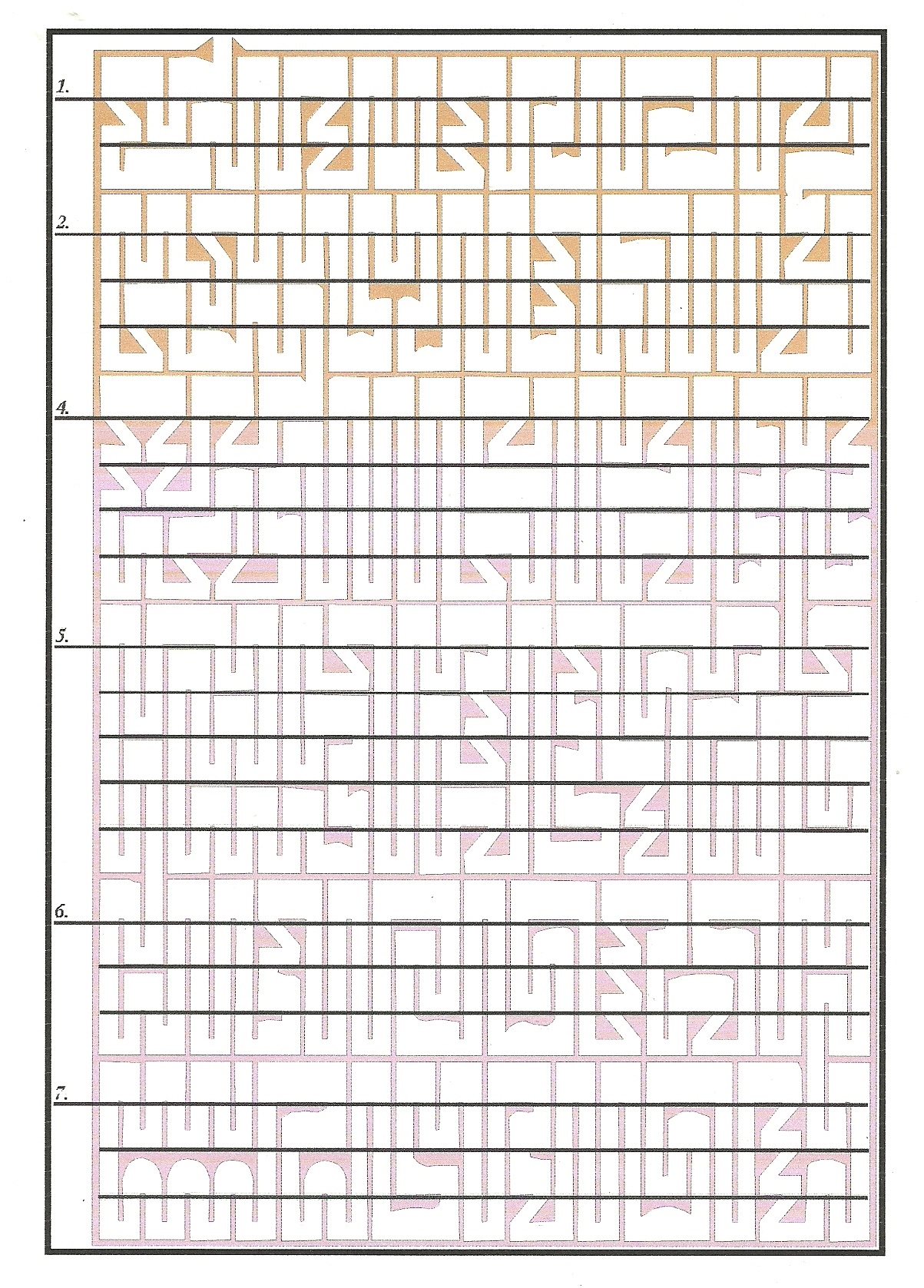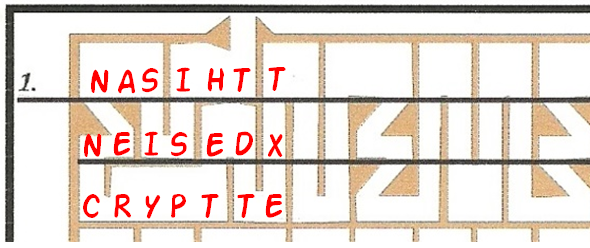Blog reader Tony Gaffney has provided me a strange drawing from a British archive. Does it code a text? Is it a cipher tool? Any help from my readers is welcome.
Tony Gaffney, who is known to readers of this blog as a great codebreaker and crypto history scholar, has provided me an interesting document. It’s a single-paged drawing he found in a British archive in a folder labled “Deciphers of Diplomatic Papers American 1780-1841”.
The Maze Cryptogram
Here’s the document Tony found:

According to Tony, the folder contained no explanation of this drawing. It is not known whether it has actually got to do something with diplomatic ciphers.
Here are a few observations:
- The drawing can be viewed as a maze (I will therefore call it “Maze Cryptogram”). The entrance is at the top of the sheet. The maze ends near the lower left corner.
- However, the object shown here is not a maze in the usual sense. There are no forkings. It is therefore trivial to get from the entrance to the end.
- The maze is divided into six sections numbered 1, 2, 4, 5, 6, 7. There’s no section 3.
What’s the purpose of this document?
The maze contains many elements that look like letters (especially M’s, U’s, W’s and Z’s). So, my first guess was that the object shown is an encrypted text (as a crypto-enthusiast this is usually my first guess anyway). However, I couldn’t find an obvious way how a text is coded in the maze.
Then I realized that we are dealing with a maze, which suggests that this sheet was used for a game or a puzzle. However, I can’t think of a game or puzzle that makes sense in this context.
Meanwhile I believe that the maze was a stencil for a transposition cipher. The following picture shows how it might have been used to encrypt the sentence THIS IS AN ENCRYPTED TEXT (the text can be read if you start at the entrance and follow the maze):
The ciphertext is NASIHTT NEISEDX CRYPTTE.
The different sections of the maze might represent different starting points for entering text (varying the entry point increases security if the maze is reused).
A great find
If the maze cryptogram is really a tool for creating a transposition cipher, it’s one of the most original cipher tools I have ever seen. Many thanks to tony Gaffney for providing me this great discovery.
If you think that I’m wrong and that this maze was used for something different, please let me know. I you have other ideas about this document, I would be interested to learn.
Follow @KlausSchmeh
Further reading:
Linkedin: https://www.linkedin.com/groups/13501820
Facebook: https://www.facebook.com/groups/763282653806483/




Kommentare (25)